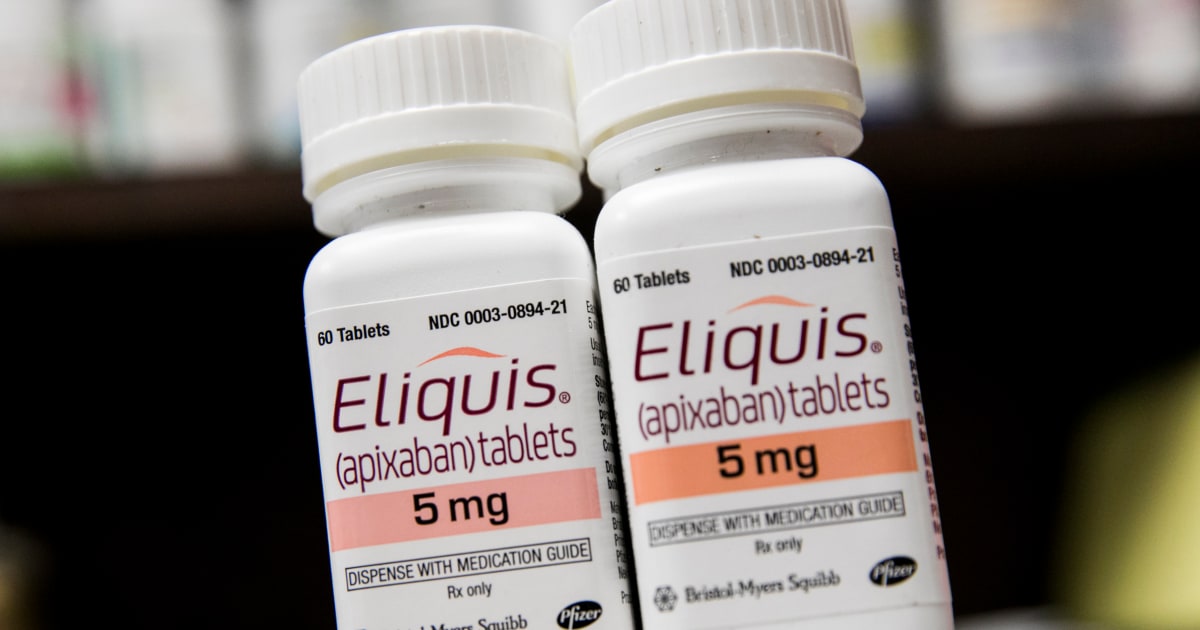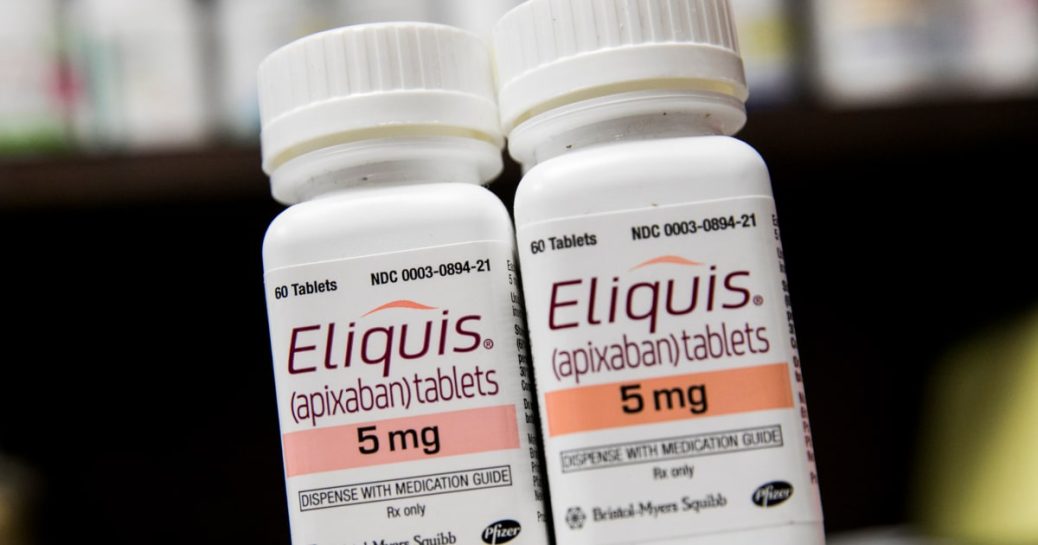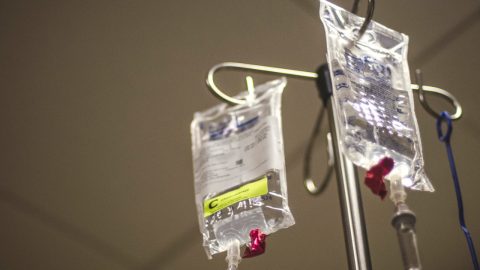
The Biden administration said Thursday that it had reached an agreement with drugmakers to lower prices on the 10 costliest prescription drugs under Medicare.
It’s part of the federal government’s first-ever drug pricing negotiations, a cost reduction it claims could help ease the financial burden on the estimated 1 in 7 older adults in the U.S. struggling to pay for their medications.
Here are the negotiated prices for the drugs, based on a 30-day supply:
- Eliquis, a blood thinner from Bristol Myers Squibb and Pfizer: $231 negotiated price, down from $521 list price.
- Xarelto, a blood thinner from Johnson & Johnson; $197 negotiated price, down from $517 list price.
- Januvia, a diabetes drug from Merck: $113 negotiated price, down from $527 list price.
- Jardiance, a diabetes drug from Boehringer Ingelheim and Eli Lilly: $197 negotiated price, down from $573 list price.
- Enbrel, a rheumatoid arthritis drug from Amgen: $2,355 negotiated price, down from $7,106 list price.
- Imbruvica, a drug for blood cancers from AbbVie and Johnson & Johnson: $9,319 negotiated price, down from $14,934 list price.
- Farxiga, a drug for diabetes, heart failure and chronic kidney disease from AstraZeneca: $178 negotiated price, down from $556 list price.
- Entresto, a heart failure drug from Novartis: $295 negotiated price, down from $628 list price.
- Stelara, a drug for psoriasis and Crohn’s disease from J&J: $4,695 negotiated price, down from $13,836 list price.
- Fiasp and NovoLog, diabetes drugs from Novo Nordisk: $119 negotiated price, down from $495 list price.
The new negotiated prices were compared to the 2023 list prices of the drugs.
It’s important to note that these numbers do not represent a direct comparison between the new negotiated prices and what Medicare and enrollees would have originally paid, said Stacie Dusetzina, a health policy professor at Vanderbilt University in Nashville, Tennessee. The list price is the full retail price of a medication and doesn’t include any discounts or rebates a drug company may have offered.
Still, Dusetzina said, these are “pretty big discounts.”
“I think that it shows that they’re taking these negotiations very seriously and they’re trying to get much lower prices,” she said.
The lower prices are the result of months of heated negotiations between the federal government and drugmakers over the pricey medications.
The prices won’t take effect until 2026, but the measure is a landmark for Medicare. The federal government has never been able to directly haggle with drugmakers over the prices of their prescription drugs.
“It is a historic moment,” White House domestic policy adviser Neera Tanden said on a call with reporters Wednesday night. “Millions of seniors and others on Medicare will soon see their drug costs go down on some of the most common and expensive drugs that treat heart disease, cancer, diabetes, blood costs and more.”
Medicare provides health insurance coverage to more than 65 million people in the U.S.
On Wednesday’s call, administration officials said the new negotiated prices are projected to save Medicare enrollees $1.5 billion in out-of-pocket costs in the first year.
The negotiations — as mandated under the Inflation Reduction Act — began in earnest in January, when Medicare presented its opening prices to drugmakers.
The $1.5 billion is in addition to the savings from other provisions in the Inflation Reduction Act, which include a $35 monthly cap on the out-of-pocket cost of insulin and an annual cap on out-of-pocket prescription drug costs, officials said.
Officials said the negotiations are also expected to save Medicare $6 billion in the first year.
Health and Human Services Secretary Xavier Becerra described the negotiations as “intense” Wednesday.
“I had the privilege to work closely with our HHS team to oversee the negotiations,” Becerra said. “It took both sides to reach a good deal.”
Drugmakers fight lowered prices
The federal government will have until March 2025 to publish an explanation of how it reached the negotiated prices. If a drugmaker refused to negotiate, they faced a tax penalty, which could be lifted if the drugmaker chose to withdraw their drug from the Medicare program.
All of the drugmakers subject to negotiations have been asked for comment.
A spokesperson for Novartis called the negotiations “unconstitutional.”
It “will have long-lasting and devastating consequences for patients by limiting access to medicines now and in the future,” the spokespersons said in a statement.
In a statement, Steve Ubl, the president and CEO of Pharmaceutical Research and Manufacturers of America, the drug industry’s trade group, said the Biden administration is using the negotiations to “drive political headlines.”
“There are no assurances patients will see lower out-of-pocket costs,” he said.
The administration plans to leverage the negotiations to bolster Vice President Kamala Harris’ campaign ahead of the presidential election against former President Donald Trump. Harris and President Joe Biden are scheduled to appear together Thursday to tout the savings from the program.
Wednesday’s call included Becerra, Tanden and Chiquita Brooks-LaSure, administrator of the Centers for Medicare & Medicaid Services.
Worried about unaffordable medications
A study published Wednesday in JAMA found that more than half of older adults reported being very concerned about the costs of medical care and prescription drugs ahead of the election.
Nearly 9 in 10 adults ages 65 and older say they take at least one prescription drug, according to KFF, a nonprofit group that researches health policy issues.
An analysis from the Commonwealth Fund, a nonprofit health care research institute, found that U.S. retail prices — prices pharmacists charge to patients or insurers before discounts or rebates — for the 10 selected drugs were three to eight times higher compared with prices in other countries of similar size and wealth.
Together, the 10 selected drugs accounted for more than $50 billion of Medicare Part D spending from June 1, 2022, to May 31, 2023, or 20%, according to the CMS.
Medicare recipients spent $3.4 billion out of pocket for those drugs in 2022, with average out-of-pocket spending for the most expensive drugs as high as $6,497 per enrollee, according to the agency.
The 10 negotiated drugs are just the start: In 2027, negotiated prices will go into effect for 15 more drugs, followed by another 15 drugs in 2028 and 20 more in each subsequent year. It’s possible that seniors could save even more in the next few years.
The outcome could be jeopardized if the drugmakers succeed in their lawsuits to block the law, which have so far been unsuccessful.
“It’s a big deal that they reached an agreement with all 10 drugmakers,” Dusetzina wrote in an email. “No one opted to leave Medicare and Medicaid in protest over their negotiated prices. That’s a success!”
The negotiations are limited to drugs under Medicare Part D, which covers medications used at home.
In the coming years, however, drugs under Medicare Part B, which are administered in medical facilities — such as chemotherapy drugs — will also be subject to negotiation.









Recent Comments